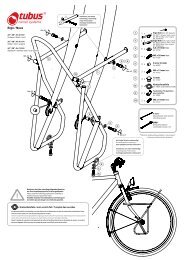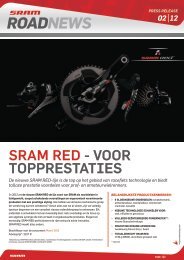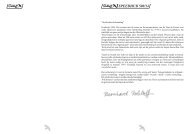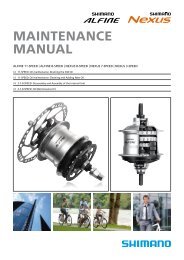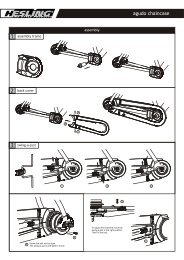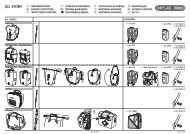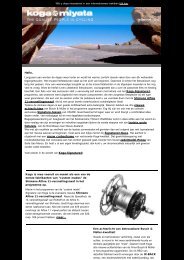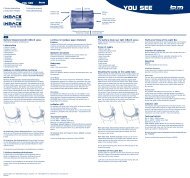General Information Gates/Rohloff - Koga Signature
General Information Gates/Rohloff - Koga Signature
General Information Gates/Rohloff - Koga Signature
You also want an ePaper? Increase the reach of your titles
YUMPU automatically turns print PDFs into web optimized ePapers that Google loves.
mounting<br />
Checking the belt tension without the Tension Tester<br />
2<br />
Should you need to check or adjust the tension of the belt and a Tension Tester is unavailable,<br />
you can apply the force deflection method. This method is not as accurate as using a<br />
Tension Tester, but it is still better than not checking the tension at all.<br />
1. Press down on the upper side of the belt between front and rear sprocket with your<br />
finger, and exert a force of 20 to 45N (2-4.5 kg). The correct tension is achieved if this<br />
force can move the belt down by approximately 10mm.<br />
2. Since the tension may vary a little along the belt, you should repeat this procedure<br />
several times. Rotate the cranks a quarter turn after each measurement and measure<br />
again.<br />
3. If the tension of the belt is too high or too low, adjust the tension until the<br />
measurement result is good.<br />
Please note:<br />
This re-adjustment of the belt tension is done with the tensioning mechanism of the frame.<br />
In this example it is done with the adjustment bolts of the dropouts. Proceed as you did<br />
when Mounting the <strong>Gates</strong> Carbon Drive Belt, this means the correct alignment of the belt<br />
has to be guaranteed at all times while you adjust the tension. You have to adjust both, the<br />
alignment and the tension.<br />
Using the Snubber to keep the <strong>Gates</strong> Carbon Drive Belt from<br />
ratcheting<br />
If the <strong>Gates</strong> Carbon Drive is used with the <strong>Rohloff</strong> SPEEDHUB 500/14, a so-called “Snubber”<br />
has to be installed. The Snubber guides the belt at the rear sprocket and prevents the belt<br />
from ratcheting over the teeth. Ratcheting teeth can damage the inner carbon structure of<br />
the belt. This can cause the belt to break when the bike is being used. If you think that the<br />
inner structure of your belt might be damaged, you should replace the belt<br />
www.carbondrivesystems.com<br />
17





